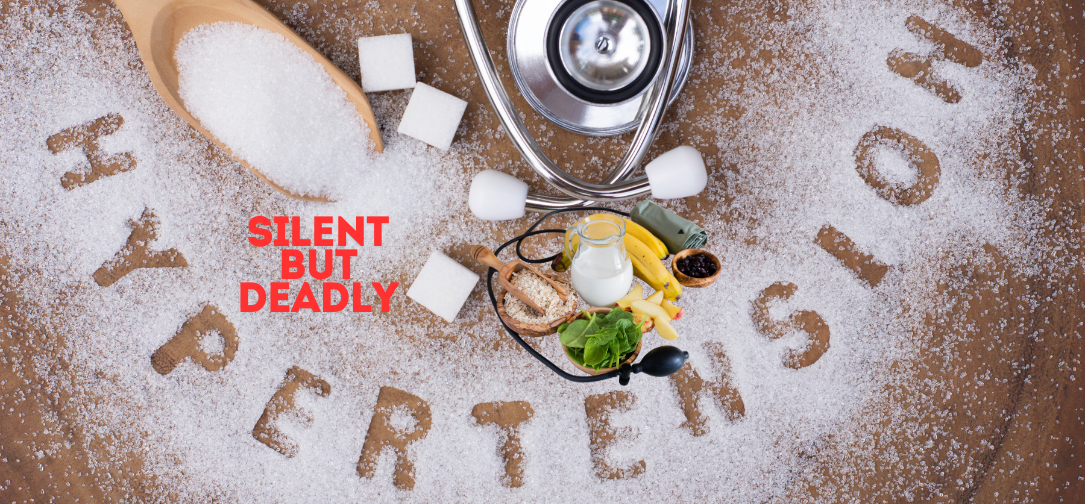Public Safety
Hypertension: Why It’s More Dangerous Than You Think

Hypertension, commonly known as high blood pressure, is often referred to as a “silent killer.” This nickname is not without reason. Unlike many other medical conditions that exhibit obvious symptoms, hypertension can persist undetected for years, gradually damaging critical organs such as the heart, kidneys, brain, and eyes. It is a major risk factor for cardiovascular diseases, which are the leading cause of death globally. Despite the gravity of this condition, public awareness and understanding of hypertension remain insufficient. This article delves deep into what hypertension is, why it is more dangerous than commonly perceived, and what can be done to manage and prevent this stealthy yet deadly condition.
Understanding Hypertension: The Basics
Blood pressure is the force exerted by circulating blood against the walls of blood vessels. It is measured in millimeters of mercury (mmHg) and is represented by two numbers: systolic and diastolic pressure. The systolic pressure (the higher number) indicates the force exerted when the heart beats, while the diastolic pressure (the lower number) measures the force when the heart is at rest between beats. A normal blood pressure reading is generally considered to be around 120/80 mmHg.
Hypertension is diagnosed when these numbers consistently exceed normal levels. According to the American Heart Association (AHA), hypertension is classified as follows:
Normal: Less than 120/80 mmHg
Elevated: Systolic 120-129 and diastolic less than 80 mmHg
Hypertension Stage 1: Systolic 130-139 or diastolic 80-89 mmHg
Hypertension Stage 2: Systolic 140 or higher or diastolic 90 or higher mmHg
Hypertensive Crisis: Systolic over 180 and/or diastolic over 120 mmHg, requiring immediate medical attention
The Global Burden of Hypertension
Hypertension affects over 1.28 billion people worldwide, with two-thirds of them living in low- and middle-income countries. The prevalence of hypertension is increasing, driven by factors such as aging populations, sedentary lifestyles, poor diet, and increasing obesity rates. What makes hypertension particularly dangerous is its ability to silently wreak havoc on the body, often going unnoticed until significant damage has been done.
In 2019, high blood pressure was responsible for approximately 10.8 million deaths globally, making it one of the leading causes of premature death. Despite the availability of effective treatments, only 1 in 5 hypertensive individuals have their condition under control. This underlines a significant public health challenge, exacerbated by poor awareness, limited access to healthcare, and inadequate treatment adherence.
Why Hypertension is More Dangerous Than You Think
Silent but Deadly: Lack of Symptoms
One of the most perilous aspects of hypertension is that it often presents no symptoms until serious complications arise. Many people with high blood pressure feel completely fine, which can lead to complacency and delay in diagnosis. This silent nature means that many people are unaware they have hypertension until they experience a heart attack, stroke, or other severe health issues.
Complications of Uncontrolled Hypertension
Uncontrolled hypertension can lead to a range of severe health complications, including:
Heart Disease: High blood pressure damages the arteries, making them less elastic and increasing the workload on the heart. This can lead to coronary artery disease, heart attacks, and heart failure.
Stroke: Hypertension is the leading risk factor for stroke. It can cause blood vessels in the brain to weaken and rupture or become blocked, leading to a stroke.
Kidney Damage: The kidneys are highly vascular organs, meaning they have a dense network of blood vessels. High blood pressure can damage these vessels, impairing the kidneys’ ability to filter waste from the blood and potentially leading to kidney failure.
Eye Damage: Hypertension can cause damage to the blood vessels in the retina, leading to hypertensive retinopathy. This can result in blurred vision, vision loss, or even blindness.
Peripheral Artery Disease (PAD): High blood pressure can lead to atherosclerosis, a condition where the arteries harden and narrow. This can reduce blood flow to the limbs, causing pain and increasing the risk of infections and ulcers.
Cognitive Decline and Dementia
Recent studies have highlighted a link between hypertension and cognitive decline. High blood pressure can damage the small blood vessels in the brain, leading to a reduction in blood flow and increasing the risk of vascular dementia. Moreover, it has been associated with an increased risk of developing Alzheimer’s disease.
Hypertensive Crisis: A Medical Emergency
A hypertensive crisis occurs when blood pressure spikes to extremely high levels, typically above 180/120 mmHg. This is a medical emergency that requires immediate attention. Symptoms may include severe headaches, shortness of breath, nosebleeds, and severe anxiety. If left untreated, it can lead to life-threatening complications such as stroke, heart attack, or organ damage.
Impact on Pregnancy: Preeclampsia and Eclampsia
Hypertension during pregnancy, known as preeclampsia, can pose serious risks to both the mother and the baby. It can lead to reduced blood flow to the placenta, limiting the baby’s oxygen and nutrient supply, which can result in low birth weight or premature birth. In severe cases, preeclampsia can develop into eclampsia, a condition characterized by seizures and other life-threatening complications.
Causes and Risk Factors
The exact cause of hypertension is often not identifiable, especially in cases of primary (or essential) hypertension, which accounts for about 90-95% of all cases. However, several risk factors have been identified:
1. Genetics: Family history plays a significant role in hypertension. If one or both parents have high blood pressure, the likelihood of developing the condition increases.
2. Age: The risk of hypertension increases with age. As people get older, their blood vessels lose some of their elasticity, which can contribute to higher blood pressure.
3. Obesity: Excess body weight can increase the risk of hypertension by increasing the workload on the heart and blood vessels.
4. Sedentary Lifestyle: Physical inactivity can lead to weight gain and increase the risk of high blood pressure. Regular exercise helps keep the heart and blood vessels healthy.
5. Dietary Factors: Diets high in salt, unhealthy fats, and sugar, and low in fruits and vegetables can contribute to the development of hypertension.
6. Alcohol and Tobacco Use: Excessive alcohol consumption and smoking can both raise blood pressure levels. Smoking also damages blood vessel walls, making them more prone to narrowing and increasing the risk of hypertension.
Stress: Chronic stress can contribute to hypertension, although the relationship is complex. Stressful situations can lead to temporary spikes in blood pressure, and over time, these temporary increases may cause permanent damage.
Medical Conditions: Conditions such as diabetes, chronic kidney disease, and sleep apnea can increase the risk of developing secondary hypertension, where high blood pressure is a result of an underlying medical issue.
Diagnosis and Monitoring
Given its silent nature, regular blood pressure screening is crucial for early detection and management of hypertension. Blood pressure can be measured using a sphygmomanometer, a device that includes a cuff to constrict the arm and a gauge to measure pressure. For an accurate diagnosis, multiple readings over several visits may be necessary, as blood pressure can vary throughout the day and in response to different situations.
In some cases, ambulatory blood pressure monitoring may be recommended. This involves wearing a portable device that measures blood pressure at regular intervals over 24 hours, providing a more comprehensive view of a person’s blood pressure throughout their daily activities.
Management and Treatment
The management of hypertension typically involves lifestyle modifications, medication, or a combination of both. The treatment approach depends on the severity of the condition and the presence of other risk factors or comorbidity.
Lifestyle Modifications:
- Diet: A heart-healthy diet, such as the DASH (Dietary Approaches to Stop Hypertension) diet, can help lower blood pressure. This diet emphasizes fruits, vegetables, whole grains, lean proteins, and low-fat dairy products while limiting salt, saturated fats, and added sugars.
- Physical Activity: Regular exercise, such as brisk walking, jogging, swimming, or cycling, can help lower blood pressure and improve overall cardiovascular health.
- Weight Management: Achieving and maintaining a healthy weight can significantly reduce blood pressure and improve heart health.
- Limiting Alcohol and Avoiding Tobacco: Reducing alcohol intake and quitting smoking can have a substantial impact on blood pressure levels and overall cardiovascular risk.
- Stress Management: Techniques such as meditation, deep breathing exercises, and yoga can help manage stress and may contribute to lower blood pressure.
Medications:
For those unable to control hypertension through lifestyle changes alone, medications may be necessary. Several classes of drugs are used to treat high blood pressure, including:
- Diuretics: Help the body eliminate excess sodium and water, reducing blood volume and pressure.
- ACE Inhibitors and ARBs: Relax blood vessels by inhibiting the production or action of angiotensin, a hormone that causes blood vessels to narrow.
- Calcium Channel Blockers: Prevent calcium from entering the heart and blood vessel cells, leading to lower blood pressure.
- Beta-Blockers: Reduce heart rate and the force of heart contractions, thereby lowering blood pressure.
- Vasodilators: Directly relax the blood vessels, allowing blood to flow more easily.
The choice of medication depends on the individual’s overall health, the severity of hypertension, and the presence of other conditions, such as diabetes or kidney disease. It is essential to take these medications as prescribed and to work closely with a healthcare provider to manage any side effects and adjust treatment as necessary.
Preventing Hypertension: A Public Health Priority
Preventing hypertension is a critical public health goal. While some risk factors, such as genetics and age, cannot be controlled, many lifestyle-related factors can be modified to reduce the risk of developing high blood pressure. Public health initiatives aimed at reducing salt intake, promoting healthy eating and physical activity, and increasing awareness of hypertension and its risks are vital.
1. Community Education: Increasing public awareness about the risks of hypertension and the importance of regular screening can help in early detection and management.
2. Healthy Food Policies: Implementing policies to reduce the sodium content in processed and restaurant foods can help lower population-wide blood pressure levels.
3. Physical Activity Promotion: Creating environments that encourage physical activity, such as safe walking paths and public parks, can help people integrate more movement into their daily lives.
4. Access to Healthcare: Ensuring that all individuals have access to affordable healthcare and medications is crucial for the effective management of hypertension.
Conclusion
Hypertension is a complex, multifaceted condition that poses a significant threat to global health. Its silent nature, coupled with its severe complications, makes it far more dangerous than many people realize. Effective management requires a comprehensive approach that includes lifestyle modifications, medications, and regular monitoring. Public health efforts aimed at prevention and early detection are equally important in combating this silent killer.
Ultimately, raising awareness about hypertension, encouraging healthy lifestyle choices, and ensuring access to healthcare for all are key strategies in reducing the burden of this deadly condition. With concerted effort, it is possible to mitigate the devastating impact of hypertension and improve health outcomes for millions around the world.





















